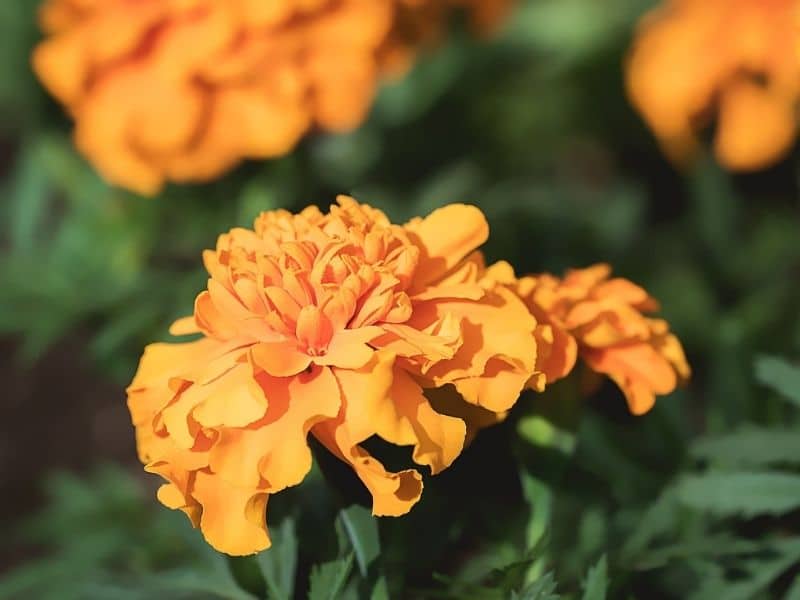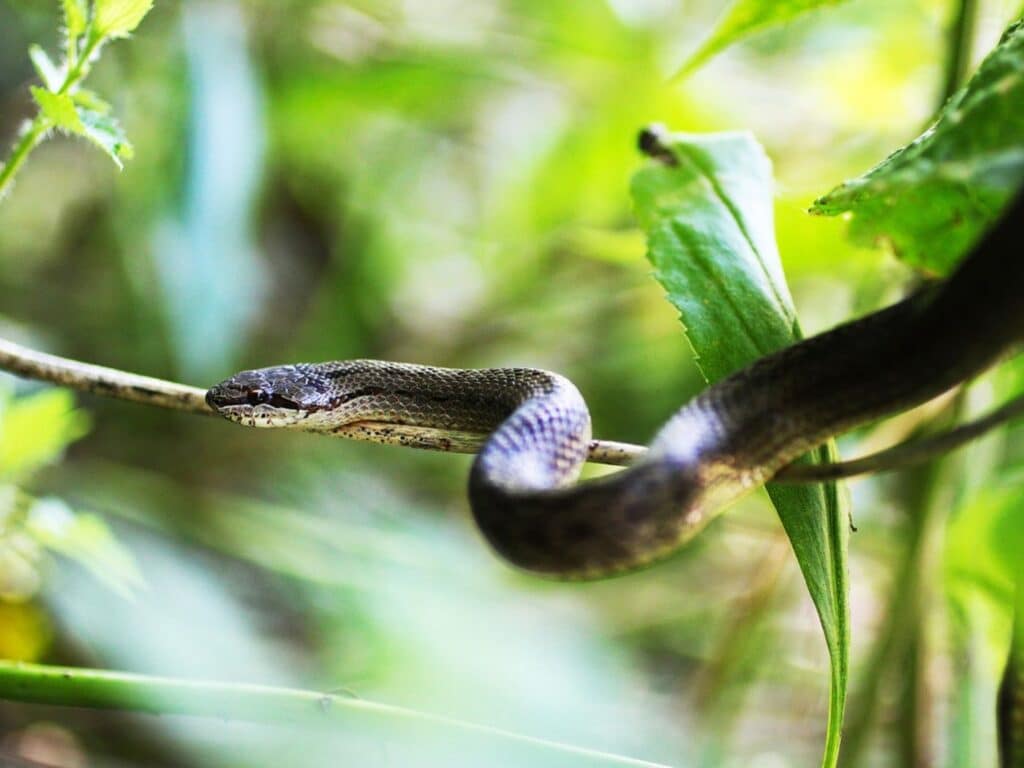Imagine walking into your garden, only to find an uninvited guest slithering among your flowers – a snake.
While some may well be harmless, others pose a real threat. So how can you keep these unwelcome visitors at bay? The answer lies in your landscaping choices.
Believe it or not, certain plants have proven to be effective in repelling snakes. By incorporating these into your garden, you’re not just enhancing its beauty, but also making it safer for you and your family.
Let’s delve into the world of these snake-repelling plants and how they can be your garden’s first line of defense.
Identifying Common Traits of Snake Repelling Plants
Understanding the common traits of snake-repelling plants can help you choose the right ones for your garden. Let’s delve into the characteristics that ward off these slithery intruders.
Scents That Snakes Dislike
Just as some smells appeal to us while others don’t, the same is true for snakes. Certain plants produce aromas that snakes find unpleasant.
For example, plants like marigold, lemongrass, and mother-in-law’s tongue release scents that, while refreshing to us, are not to a snake’s liking. Incorporating these in your garden will make it a less attractive habitat for snakes.
Textures and Plant Structures That Deter Snakes
Snakes have sensitive bodies and prefer to move across smooth surfaces. Therefore, the physical arrangement of a plant can be a natural deterrent.
Some plant species have thorny, rough, or prickly structures that snakes find uncomfortable to slither over or around. Rosemary and hawthorn are prime examples of plants with such structures. Add these to your garden layout to create a sort of natural snake barrier.
Top Plants That Repel Snakes
In your quest to create a garden that is not only beautiful but also snake-free, there are a few plants known for their repelling traits. Let’s explore some top picks that can help keep your garden safe from serpents.
Marigolds: Colorful and Effective

Oh, the charm of Marigolds! These vibrant, glossy blooms aren’t just easy on the eyes; they’re also fantastic at repelling snakes.
Marigolds produce a peculiar scent that snakes find intolerable. Plant these beauties strategically in your garden, and you’ll not only enhance the aesthetics but also deter any unwelcome scaly visitors at the same time.
Lemongrass: Citronella Oil as a Snake Deterrent

Give your snake defense an aromatic boost with Lemongrass. This plant, famous for its citrusy scent, is a powerhouse when it comes to keeping snakes at bay.
You see, lemongrass is packed with natural citronella oil, a kryptonite for snakes. Plant a few around the garden edges, and you’ll find fewer slithery guests trying to pay a visit.
How to Use These Plants in Your Garden
Getting your garden to work in your favor against snakes is not as tricky as it seems. Here’s what you can do:
Strategic Plant Placement
Instead of randomly adding plants to your garden, think about their placement. Plant snake-repelling species, such as marigolds and lemongrass, near areas where snakes are likely to enter, like the garden’s boundaries or near any water sources.
Placing these plants strategically can help create an unappealing environment for snakes, making them less likely to invade your garden.
Creating a Perimeter with Snake Repelling Plants
Encourage a snake-free garden by building a barrier using specific plants. Plant dense, low-lying vegetation like hawthorn and rosemary along your garden’s perimeter. These types of plants have thorny features that snakes dislike navigating, thus acting as a natural fence keeping the creatures at bay.
Using Plant Combinations for Increased Efficacy
Don’t stick to just one type of plant. Harness the power of combining different plant species known for their snake-repelling qualities.
For example, the strong scent emitted by marigolds compliments the citronella oil in lemongrass, creating a potent yet appealing mixture that snakes find distressing. This synergistic planting strategy can substantially enhance your garden’s defenses against these unwanted guests.
Additional Tips for Snake Prevention in Your Yard
Aside from using plants to deter snakes, it’s also key to pay attention to your yard maintenance and consider other natural snake repellents.
Regular Yard Maintenance to Avoid Snake Habitats
Forget about creating the perfect conditions for snakes; maintaining your yard regularly may well just be the magic wand you need. Always keep your grass short; snakes love to hide in tall grass, making it their perfect go-to spot.
Don’t let that happen. Furthermore, clean up leaf piles, debris and clutter instantly, as these elements pave the way for potential snake hideouts. And remember, be on the watch for burrows and holes, lets they become inviting homes for these reptiles.
Safe and Natural Snake Repellents Beyond Plants
While plants are great deterrents, you can use other safe and natural snake repellents. Did you know that snakes detest the smell of amonia and vinegar? Why not spray a mixture of these around your yard regularly?
Essential oils such as clove and cinnamon can also be your allies in the snake battle. They dislike these smells and will surely steer clear.
Plus, these ingredients are easy to find and environmentally-friendly. As an added bonus, squirrels aren’t fans of these strong odors either, so you’ll be solving two problems at once!
By incorporating these specially highlighted activities into your routine, your yard should become a no-go zone for snakes, significantly reducing your run-ins with them.
Case Studies and Success Stories
In this section, we’ll explore practical instances and first-hand accounts of using plants to fight against snake invasions in gardens. From real-life gardeners to experts in natural pest control, let’s delve into their experiences and insights.
Real-Life Examples of Gardens That Stay Snake-Free
- The Marigold Marvel: Betty, a gardener from Michigan, had a recurring snake issue in her vegetable garden. Acting on advice from a friend, she decided to switch things up and plant marigolds around her garden boundary. The result? She noticed a drastic reduction in snake sightings and now swears by the power of marigolds.
- The Lemongrass Victory: Another great instance is Tom from Arizona. Given the dry climate, his garden attracted snakes frequently. Having a fondness for Asian cuisine, he decided to grow lemongrass. Not only did he find the strong aroma of lemongrass delightful, but it also proved efficient in keeping snakes out of his garden.
- The Thorny Fortress: Then, there’s Jessica from Texas who built a natural barrier around her property using hawthorn and rosemary. This thorny perimeter not only minimized the number of snake encounters but also added an aesthetic touch to her landscape.
- Expert Opinion 1: Susan, a renowned natural pest control expert, emphasizes the effectiveness of combining different plant species, such as marigolds and lemongrass. According to Susan, this combination creates an intense scent cloud, which snakes find disorienting.
- Expert Opinion 2: Joe, another sought-after authority in the field, agrees with Susan’s approach but adds that maintaining yard hygiene plays an equally vital role. Regularly cutting grass and clearing debris can significantly lower the chances of snakes making your garden their home, he explains.
Up next:







